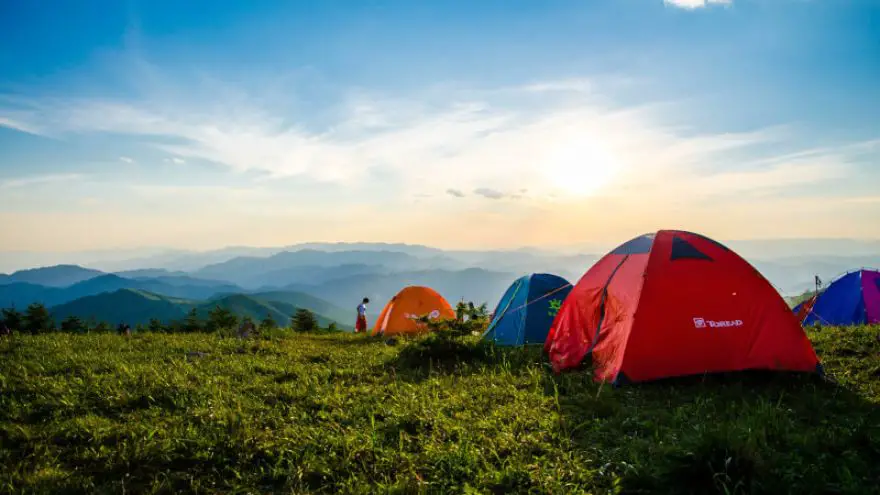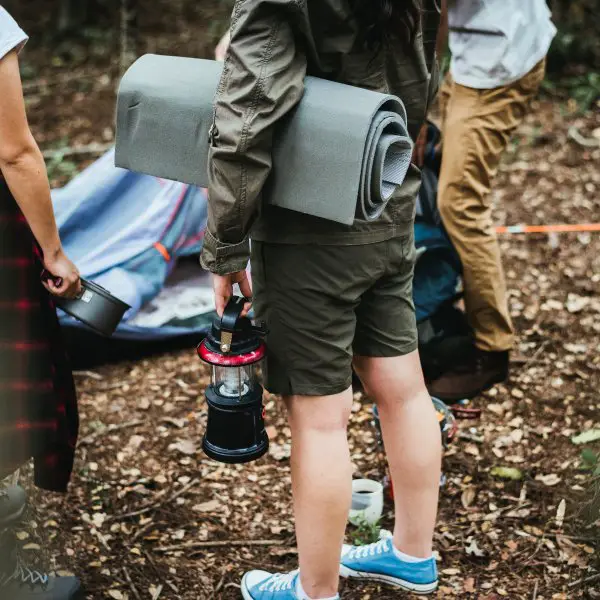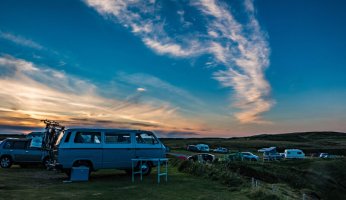How to Camp With Perishables in the Summer
 How to Camp With Perishables in the Summer
gearweare.net
How to Camp With Perishables in the Summer
gearweare.net
The approaching warmth of the longer days of spring and summer means that is time to get out your camping gear and prepare for nights spent under the stars. This warmth also means that you need to be much more careful when cooking outside though. When perishable food is left out in temperatures more than 40° F for extended periods of time it spoils. Spoiled food can make you sick if eaten and will quickly ruin your time in the outdoors. Making sure meals are properly stored while camping is therefore critical for staying safe and enjoying a trip into nature.
Despite the dangers presented when perishable food becomes too hot, cooking complex meals that use fresh ingredients is totally possible. However, certain precautions should be taken to ensure that the food is safe.
It should also be noted that the methods for storing and preparing perishable food outlined here are meant for car camping. Although some of the tips can be utilized and adapted for backpackers, access to a cooler is the primary necessity for utilizing fresh food while camping. Backpackers should instead plan meals that will not go bad.
What Are Perishables?
According to Foodsafety.gov foods that need to be kept in a cooler include meats (beef, pork, poultry, and seafood), dairy products (cheese, yogurt, and milk), and many fruits and vegetables. Not all fruits and veggies need to be kept cool though. For example, potatoes, onions, and apples can be stored at room (or outdoor) temperature, while broccoli, lettuce, and berries should all be kept in the cooler. However, if a fruit or vegetable is already cut up it needs to be kept cool.
What all of these perishable foods have in common is that will go bad if left out in temperatures that exceed 40° F for two hours or more. When temperatures are above 90° F these foods will spoil even faster and should not be left out for more than an hour.

Using a Cooler
When car camping a cooler is needed to keep perishable food cold enough that it doesn’t spoil. Maximizing the cold of the cooler isn’t as simple as stuffing it full of ice though. There are some tricks that will allow the cooler to stay colder for more days, making it possible for you to cook fresh foods on day three or four of a camping trip.
First, fill the cooler with ice a few hours before you want to put your food in it. This will bring its temperature down, so the food that goes in it will be cold right away. You can also place the cooler in your fridge or freezer to pre-cool it, however, not many fridges will be big enough to accommodate the large size of the cooler required for a multi-day camping trip.
When it comes time to actually pack the cooler, ditch the ice cubes though. Solid ice or ice packs will last longer than ice. They also won’t cause a gross puddle as the bottom of your cooler once the melt and are therefore a more sanitary option. If you don’t have ice packs, fill some plastic water bottles or jugs about two-thirds of the way with water, then freeze. Not only will these home-made ice packs stay cold longer than a bag of ice, but when they melt they will provide you with more drinking water.
There is also a science to how you should pack the cooler to make sure it stays cold longer. Start with a layer of ice packs at the bottom, then put the more durable food and food you won’t be needing right away above that. Food such as meat that needs to stay the coldest should also go here. Above that put some more ice packs, then place the more delicate food, such as vegetables, at the top. Try to fill your cooler completely, since a full cooler is a colder cooler. If you have extra space after you are done packing fill it with a few more ice packs.

Good practice for multi-day camping trips when your preparing many different meals is to freeze whatever food you can. This will make that food last longer and will keep the cooler even colder since frozen food will act as an extra ice pack. I’ll typically freeze some chicken or burgers then eat them for dinner on the third or fourth day of my trip once they have thawed completely.
Finally, try to minimize how often you open your cooler since each time you open it cold air escapes and warm air gets in. If you will be bringing beer with you you’ll probably be opening and closing the cooler a lot. One solution to that issue is to have separate coolers for drinks and food, however, that is only an option if you have enough space in your vehicle.
Keeping It Clean
The accelerated rate at which perishables spoil in warm temperatures also makes keeping your cooking station clean critical. Always wash your hands before cooking, using warm water and biodegradable soap. If you don’t have a way to wash at your campsite make sure to use some hand sanitizer.
Prepare meat separately from all other foods. Raw meat can contain dangerous bacteria which can make you or your friends quite sick. Any cutting boards, pans, or utensils that touch the raw meat should, therefore, be thoroughly washed before they are used to handle any vegetables or cooked meat. When using meats that need to be cut, I will often chop them up at home as a way to minimize the mess at the campsite.











